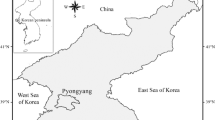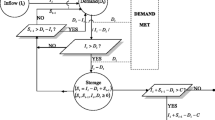Abstract
Assessing the performance of rainwater harvesting systems, which is one of the effective ways to cope with the water shortage crisis, leads to better management of these systems. In this paper, the reliability of rainwater harvesting systems and the overflow ratio of storage tanks were investigated for different climatic conditions, different volumes of tanks, and different roof areas. The results indicated that in the cities of Rasht, Sari, Tabriz, and Yazd, using a 10-m3 tank, non-potable water needs of a four-person family can be supplied from a 100-m2 roof area for 67.3, 42.98, 12.07, and 1.35% of the days during a year. Further, if a 1-m3 tank is used in Rasht, 50.67% of the total harvested water will be overflowed, which would decrease to 19.21% if the 10-m3 tank is replaced. For Tabriz, the ratio of overflow from the 5-m3 tank was zero, but for the city of Sari, even with use of a 10-m3 tank, 0.73% overflow occurred. In addition, for Yazd city, using a 1-m3 tank, an overflow of 48.4% occurred, but when the volume of the tank was increased to 2 m3, there was no overflow. For the city of Tabriz, the ratio of overflow from the 5-m3 tank was zero, but for the city of Sari, even using a 10-m3 tank, 0.73% overflow occurred. For a constant volume of storage, as long as the average rainfall of the area was high, the ratio of overflow was also elevated. The ratio of overflow, from the highest to the lowest, was related to the temperate climate of the Caspian Sea and the pseudo-Mediterranean climate, moderate and humid climate, mountainous climate, and desert hot and dry climate, respectively.





Similar content being viewed by others
References
Bailey RT, Beikmann A, Kottermair M, Taboroši D, Jenson JW (2018) Sustainability of rainwater catchment systems for small island communities. J Hydrol 557:137–146
Bashar MZI, Karim MR, Imteaz MA (2018) Reliability and economic analysis of urban rainwater harvesting: a comparative study within six major cities of Bangladesh. J Res Conserv Recycl 133:146–154
Dakua M, Akhter F, Biswas PP, Siddique MLR, Shihab RM (2013) Potential of rainwater harvesting in buildings to reduce over extraction of groundwater in urban areas of Bangladesh. Eur Sci J 3:68–74
Imteaz MA, Ahsan A, Naser J, Rahman A (2011) Reliability analysis of rainwater tanks in Melbourne using daily water balance model. J Res Conserv Recycl 56:80–86
Imteaz MA, Adeboye OB, Rayburg S, Shanableh A (2012) Rainwater harvesting potential for southwest Nigeria using daily water balance model. J Res Conserv Recycl 62:51–55
Imteaz MA, Matos C, Shanableh A (2014) Impacts of climatic variability on rainwater tank outcomes for an Inland City, Canberra. Int J Hydrol Sci Technol 4(3):177–191
Jing X, Zhang S, Zhang J, Wang Y, Wang Y (2017) Assessing efficiency and economic viability of rainwater harvesting systems for meeting non-potable water demands in four climatic zones of China. J Res Conserv Recycl 126:74–85
Karim MR, Bashar MZI, Imteaz MA (2015) Reliability and economic analysis of urban rainwater harvesting in a megacity in Bangladesh. J Res Conserv Recycl 104:61–67
Khastagir A, Jayasuriya N (2010) Optimal sizing of rain water tanks for domestic water conservation. J Hydrol 381(3–4):181–188
Lani NHM, Syafiuddin A, Yusop Z, Adam UB, Amin MZBM (2018) Performance of small and large scales rainwater harvesting systems in commercial buildings under different reliability and future water tariff scenarios. J Sci Total Environ 636:1171–1179
Rahman A, Keane J, Imteaz MA (2012) Rainwater harvesting in Greater Sydney: water savings, reliability and economic benefits. J Res Conserv Recycl 61:16–21
Rashidi Mehrabadi MH, Saghafian B, Haghighi Fashi F (2013) Assessment of residential rainwater harvesting efficiency for meeting non-potable water demands in three climate conditions. J Res Conserv Recycl 73:86–93
Zhang S, Zhang J, Jing X, Wang Y, Wang Y, Yue T (2018) Water saving efficiency and reliability of rainwater harvesting systems in the context of climate change. J Clean Prod 196:1341–1355
Author information
Authors and Affiliations
Corresponding author
Additional information
Publisher's Note
Springer Nature remains neutral with regard to jurisdictional claims in published maps and institutional affiliations.
Rights and permissions
About this article
Cite this article
Shokati, H., Kouchakzadeh, M. & Fashi, F.H. Assessing reliability of rainwater harvesting systems for meeting water demands in different climatic zones of Iran. Model. Earth Syst. Environ. 6, 109–114 (2020). https://doi.org/10.1007/s40808-019-00662-3
Received:
Accepted:
Published:
Issue Date:
DOI: https://doi.org/10.1007/s40808-019-00662-3




